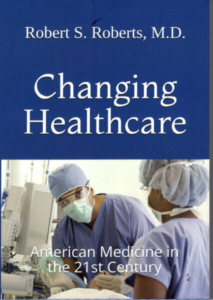There is a war being fought for the minds of our most vulnerable children.
On one side are those who want to give parents the choice of which schools their children attend. These people advocate school choice and charter schools, which enable minority children to escape poor public schools. This provides these children with a quality education that gives them the tools to escape poverty. (see School Choice – The Key to the American Dream.)
On the other side are those who want to protect the jobs of teachers’ unions and poor teachers. These people are more concerned with the political support of teachers’ unions and less concerned with the education and future of minority children. They are counting on the loyalty of minority parents who traditionally have voted Democratic despite years of that party’s ignoring the needs of their children.
Joe Biden just made his choice – he chose to support the teachers’ unions. He chose to put teachers and unions ahead of students and their future.
Biden recently pledged his support of the National Educators Association (NEA), one of the largest teachers’ unions in the country. His wife, Jill, is an NEA member. He proudly announced, “When we win this election, we’re going to get the support you need and the respect you deserve. You don’t just have a partner in the White House, you’ll have an NEA member in the White House. And if I’m not listening, I’m going to be sleeping alone in the Lincoln Bedroom.”
Biden made his priorities clear to the NEA in March, when it endorsed him in the Democratic primary. He said, “No privately funded charter school – or private charter school – would receive a penny of federal money.”
The Wall Street Journal editorial board says this is a departure even from the days of President Obama. From 2000 to 2017, the share of public-school students who attended a charter school rose from 1% to 6%. Those statistics represent thousands of stories of children, many of them black and Hispanic, who escaped failing schools to get a better education.
Biden seems eager to repudiate this record and put space between his intentions and the record of the Obama administration. He told the NEA his plan involves, “higher salaries for educators,” “universal pre-K”, and “tripling the funding for Title 1 schools.” He also pledged to “double the number of school psychologists and counselors and nurses and social workers in school,” and to “help educators wipe out the burden of their own student debt.”
The WSJ says, “Teachers first. Put it on a bumper sticker, Mr. Biden, and hope people don’t notice the corollary is that students, and especially poor and minority students, come second.”
This practice of supporting teachers’ unions at the expense of minority children has been successful for many years for Democratic candidates. But the 2018 Florida gubernatorial election proved minority parents are paying attention. Post-election analysis showed that the difference in this closely contested election was the votes of black women. They chose Ron DeSantis, a white Congressman, over Andrew Gillum, a black mayor of Jacksonville.
According to CNN exit polling of 3,108 voters, of the roughly 650,000 black women who voted in Florida, 18% or about 117,000 chose DeSantis. This exceeded their support for GOP U.S. Senate candidate Rick Scott (9%). In other words, they selected the Republican gubernatorial candidate but not the Republican senatorial candidate. William Mattox, director of the Marshall Center for Educational Options at the James Madison Institute, writes in The Wall Street Journal that the reason is school choice.
Joe Biden is surely aware of these statistics but betting on the loyalty of black and minority voters. It’s time these parents made the right choice – and voted for their children’s future. It’s time they supported the only presidential candidate who will support School Choice – President Trump.


